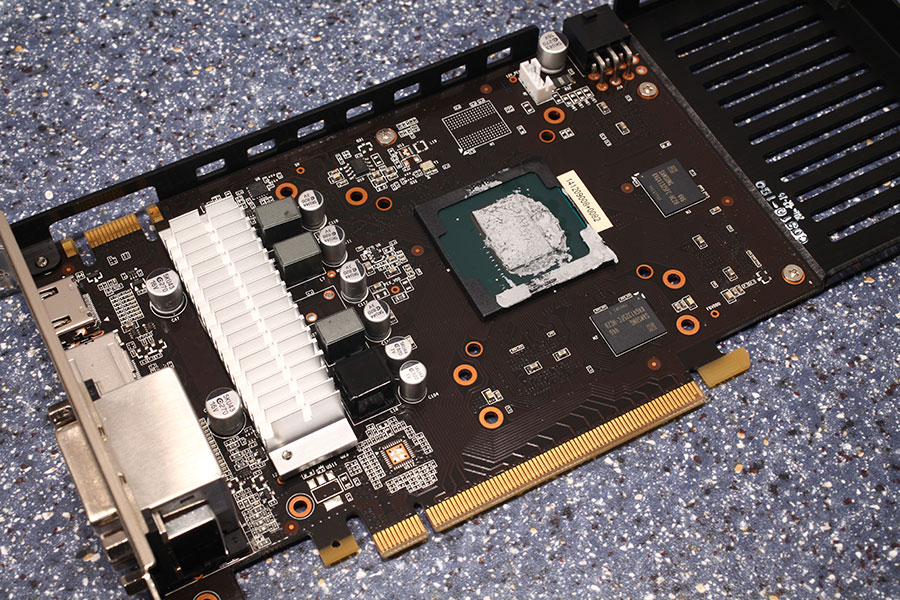- Joined
- Oct 9, 2007
- Messages
- 47,528 (7.48/day)
- Location
- Hyderabad, India
| System Name | RBMK-1000 |
|---|---|
| Processor | AMD Ryzen 7 5700G |
| Motherboard | ASUS ROG Strix B450-E Gaming |
| Cooling | DeepCool Gammax L240 V2 |
| Memory | 2x 8GB G.Skill Sniper X |
| Video Card(s) | Palit GeForce RTX 2080 SUPER GameRock |
| Storage | Western Digital Black NVMe 512GB |
| Display(s) | BenQ 1440p 60 Hz 27-inch |
| Case | Corsair Carbide 100R |
| Audio Device(s) | ASUS SupremeFX S1220A |
| Power Supply | Cooler Master MWE Gold 650W |
| Mouse | ASUS ROG Strix Impact |
| Keyboard | Gamdias Hermes E2 |
| Software | Windows 11 Pro |
In April, we polled our readers with the question "Are components with high power draw an issue for you?," and got back 22,040 responses. An overwhelming 85.5 percent of our readers (PC gamers and enthusiasts) take issue with high power draw for PC components. This comes in the wake of key components such as processors and discrete graphics cards rising in power-draw generation-over-generation, despite transitioning to smaller and smaller silicon fabrication nodes, signaling that Moore's Law isn't able to keep up with advances in performance and capabilities. The 85.5 percent of respondents who voted "yes," did so for very diverse reasons.
Our poll question wasn't a binary yes-or-no; and people could vote yes for different reasons—power bill, heat, noise, and the environment. 33.5 percent of respondents felt that power bill (energy costs) is the biggest reason why they chose yes. Heat is the second big factor, with 28.5 percent feeling that they don't want high power-draw component because power has a direct impact on heat, and all that heat is put out into the room despite how good the cooling solution is. The third place goes to noise at 12.2 percent, with bigger cooling requirements having an impact on system noise. Even big fat liquid cooling solutions ultimately rely on fans. Interestingly, only 11.3 percent voted that they care about the environment and hence take issue with high power-draw components. This figure, by the way, is much less than the 14.5 percent who voted that they don't care at all about components with high power draw.

Our question took shape as we followed the generation-over-generation power-draw trend of two key components—processors and graphics cards. The GeForce GTX 980 Ti, NVIDIA's fastest consumer graphics card in 2015, drew just 211 W of power under gaming workloads of the time, while the GTX 1080 Ti pulled a similar 231 W to workloads tested in 2017. The RTX 2080 Ti pulled 273 W for gaming of its time in 2018; while the current RTX 3090 Ti draws a whopping 445 W for today's games. These cards were each tested in different system setups, with different driver software and games which is why we can't put the data on a graph, but they still serve to illustrate a generationally rising power-draw. If Moore's Law held true, there should be a generational increase in performance from a new architecture at negligible increase in power, as the silicon will have transitioned to a new node with increased transistor density and improved power characteristics. This, however, isn't happening.
View at TechPowerUp Main Site
Our poll question wasn't a binary yes-or-no; and people could vote yes for different reasons—power bill, heat, noise, and the environment. 33.5 percent of respondents felt that power bill (energy costs) is the biggest reason why they chose yes. Heat is the second big factor, with 28.5 percent feeling that they don't want high power-draw component because power has a direct impact on heat, and all that heat is put out into the room despite how good the cooling solution is. The third place goes to noise at 12.2 percent, with bigger cooling requirements having an impact on system noise. Even big fat liquid cooling solutions ultimately rely on fans. Interestingly, only 11.3 percent voted that they care about the environment and hence take issue with high power-draw components. This figure, by the way, is much less than the 14.5 percent who voted that they don't care at all about components with high power draw.

Our question took shape as we followed the generation-over-generation power-draw trend of two key components—processors and graphics cards. The GeForce GTX 980 Ti, NVIDIA's fastest consumer graphics card in 2015, drew just 211 W of power under gaming workloads of the time, while the GTX 1080 Ti pulled a similar 231 W to workloads tested in 2017. The RTX 2080 Ti pulled 273 W for gaming of its time in 2018; while the current RTX 3090 Ti draws a whopping 445 W for today's games. These cards were each tested in different system setups, with different driver software and games which is why we can't put the data on a graph, but they still serve to illustrate a generationally rising power-draw. If Moore's Law held true, there should be a generational increase in performance from a new architecture at negligible increase in power, as the silicon will have transitioned to a new node with increased transistor density and improved power characteristics. This, however, isn't happening.
View at TechPowerUp Main Site









